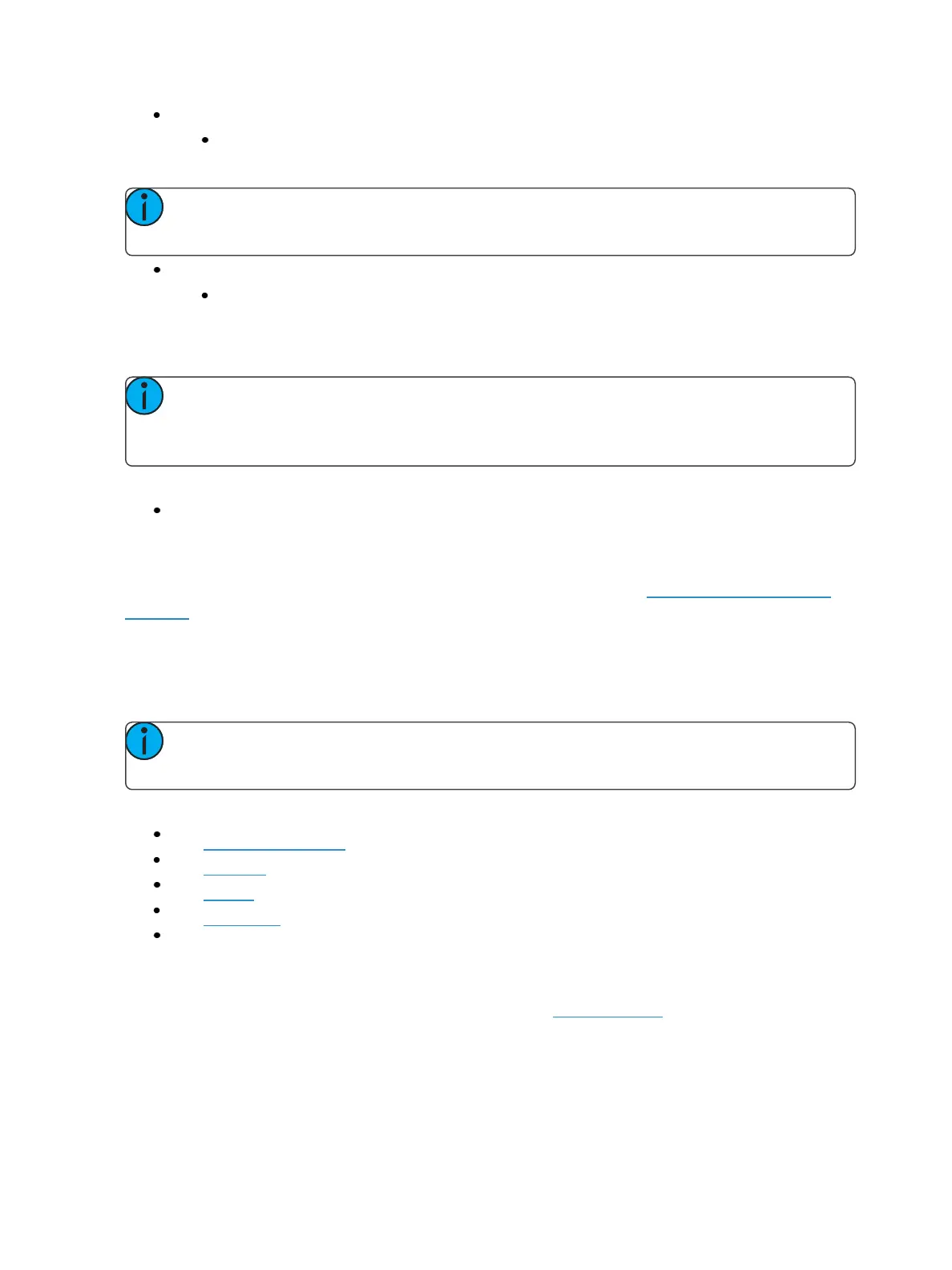Cue Playback 315
Go to Cue Out
[Go to Cue] [x] [/] [Out] [Enter] allows you to use the [Go to Cue] [Out] command on a
list specific basis. [Go to Cue] [Out] continues to affect all active cue lists.
Note: [Go to Cue] [x] [/] [Out] is similar to [Go to Cue] [x] [/] [0] except that any NPs on the
fader will fade to their home level.
Time
[Go to Cue] [5] [Time] [Enter] will go to cue 5 using cue times, and also uses any asso-
ciated follow/hang times to automatically trigger the subsequent cue. To go to a cue in
cue time, but not trigger the follow/hang, you would use [Go to Cue] [5] {Minus Links}
[Time] [Enter].
Note: If you want to specify a time or use the cue time, the [Time] command must always
be entered after any other commands, such as {Minus Links} or {SingleParam}. The excep-
tion to this rule is {Manual}.
These can be combined within the command line as well:
[Go To Cue] [1] {MultiParam} {MovesOnly} [Enter]
Virtual Faders
You can have access to additional faders by using the virtual faders (see VirtualFader Module(on
page95)).
Assigning Faders
Cue playbacks, submasters, grandmasters, palettes, and presets are targets that can be assigned to
faders.
Note: Element 2's cue list cannot be assigned to a fader. It can only be loaded on the mas-
ter playback fader pair.
Faders can be assigned in a number of different ways.
The fader configurationdisplay
The fader list
The cuelist index
The submaster display
Manually using the [Load] button
With Auto Playback Enabled
Auto Playback is a record function enabled in Setup>User>Record Default, that automatically
executes cues recorded in live on playback faders. When the cue is executed on the playback fader,
any manual parameters involved in the record operation are automatically released to the cue and all
other values stored in the cue are owned by that cue.
